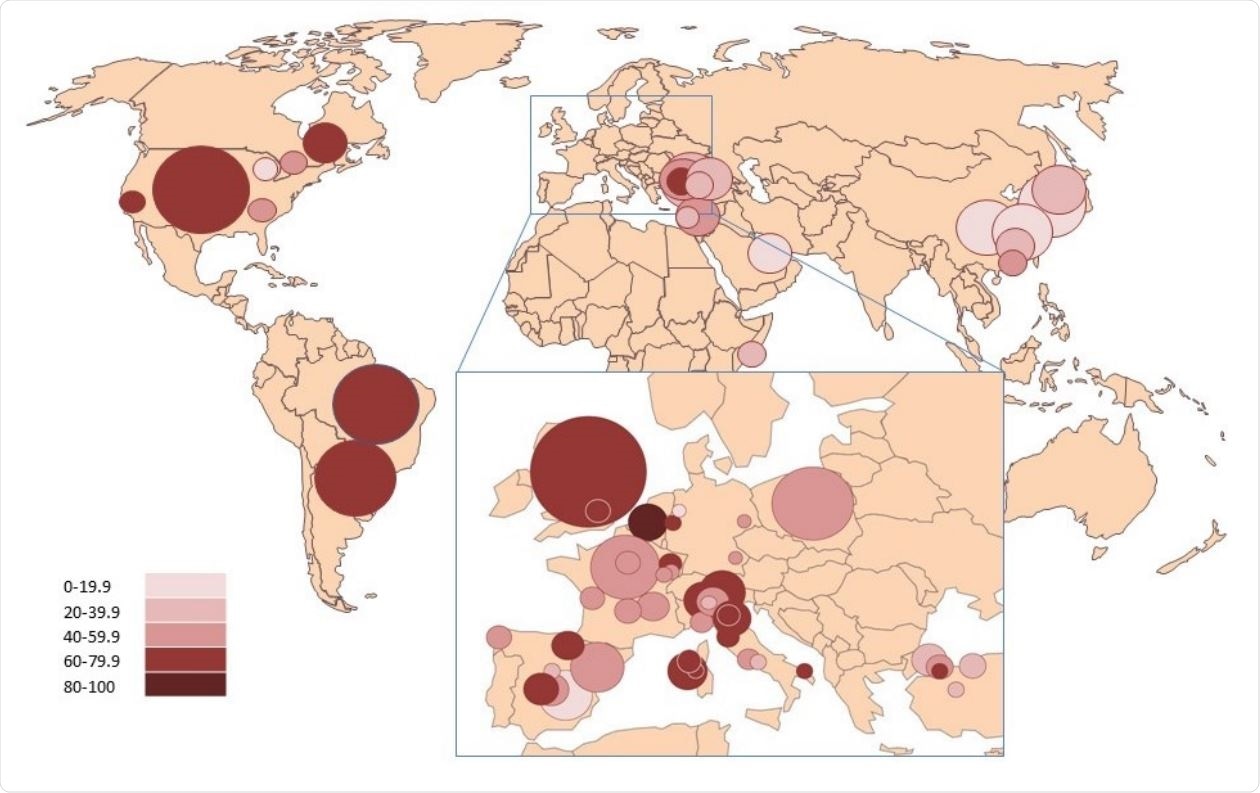Even as the COVID-19 pandemic spreads in different parts of the world, scientists are still attempting to define the characteristic signs and symptoms that are useful in diagnosing the disease. This is essential knowledge to help contain severe acute respiratory syndrome coronavirus 2 (SARS-CoV-2) transmission. Especially when it comes to diagnosing symptomatic or mild cases of COVID-19, such research could hold the key to identifying more people and preventing viral spread.
.jpg)
Colorized scanning electron micrograph of an apoptotic cell (green) heavily infected with SARS-COV-2 virus particles (orange), isolated from a patient sample. Image captured at the NIAID Integrated Research Facility (IRF) in Fort Detrick, Maryland. Credit: NIAID
Taste and Smell Alterations
One symptom that has been reported in increasing numbers in isolation or in combination with other symptoms and signs is ageusia, the sudden loss of taste, often in combination with anosmia, the loss of smell. Systematic reviews have demonstrated that these may occur in over 80% of patients. Moreover, these have a high predictive value for COVID-19. As a way, the European Centre for Disease Prevention and Control (EDCD) led the way in including these symptoms in its clinical criteria for possible COVID-19, followed by the Centers for Disease Control and Prevention (CDC) in the USA and the World Health Organization (WHO).

Worldwide prevalence of gustatory disorders (GD) in COVID-19 positive cases. Circle size is proportional to study population.
Variability in Prevalence of Ageusia
A new study by Nicola Cirillo of the University of Melbourne explores possible differences in the criteria for case identification put forth by different public health organizations and bodies in relation to geographic and temporal differences in symptom prevalence. Since the researcher felt this to be an urgent study, she did a quick, systematic review of global alterations in taste alterations as well as in four broad areas, including East Asia, the Middle East (including Turkey), Europe (including Britain), and the Americas.
Cirillo’s research covered 61 full-text studies from 20 countries, 5 of which were international in scope. Most of them were from Europe. She found that just over half of all confirmed cases in these studies had problems with taste. Between geographical regions, the subgroups showed significant differences in the prevalence of this symptom.
The lowest prevalence was found in East Asia at 13%, while it was 39% in the Middle East, 57% in Europe, and a peak prevalence of 67% in the Americas. There were no differences in gross prevalence in COVID-19 patients throughout the pandemic, however, except in East Asia.
Arriving at Emergent Advice
The focused approach of the reviewer reflects the commonly used method to arrive at emergency-situation guidelines for such situations as the current COVID-19 crisis.
Cirillo says, “Awareness of the association between taste alterations and COVID-19 could be key for diagnosing the disease, particularly in dental and oral health settings.”
This conclusion is not in agreement with earlier systematic reviews, which did not find such links. However, a recent meta-analysis shows that, as in the current review, not only did about half of all COVID-19 patients have anosmia or ageusia, but these were the presenting symptoms in about 15% of patients.
Papers specifically approaching the problem of gustatory alterations in COVID-19 patients are far fewer. One earlier paper found this was present in half of the patients.
Implications
Overall, many researchers have found that this should be a cardinal symptom in any definition of COVID-19 features. Of course, many studies are potentially open to recollection bias since they are retrospective observational studies, especially if the patient had more severe symptoms such as cough and fever. Thus, Cirillo says, “The true prevalence of ageusia, hypogeusia, and dysgeusia might be significantly higher than reported.”
Also, it is possible that more healthcare workers and patients became aware of these symptoms once they were validated, leading to increased reporting. However, this should have led to an increased reporting trend over time, which was not seen except in East Asia.
Cirillo says that based on the methods they used, this study better reveals the clinical features of the disease so as to shape public health decisions. “Self-reported taste alterations can be considered a reliable parameter for investigating the prevalence of this condition in COVID-19 patients.” Distinct patterns are seen concerning the prevalence of these symptoms.
Given the potential importance of gustatory alterations in the diagnosis of mild or asymptomatic COVID-19, the researcher underlines the need to recognize this as a possible diagnostic feature of the disease. Cirillo points out, “Dentists may be the first healthcare providers to diagnose taste disturbances and are likely to play an important role in case identification and early diagnosis of COVID-19 cases in the near future.”
*Important Notice
medRxiv publishes preliminary scientific reports that are not peer-reviewed and, therefore, should not be regarded as conclusive, guide clinical practice/health-related behavior, or treated as established information.